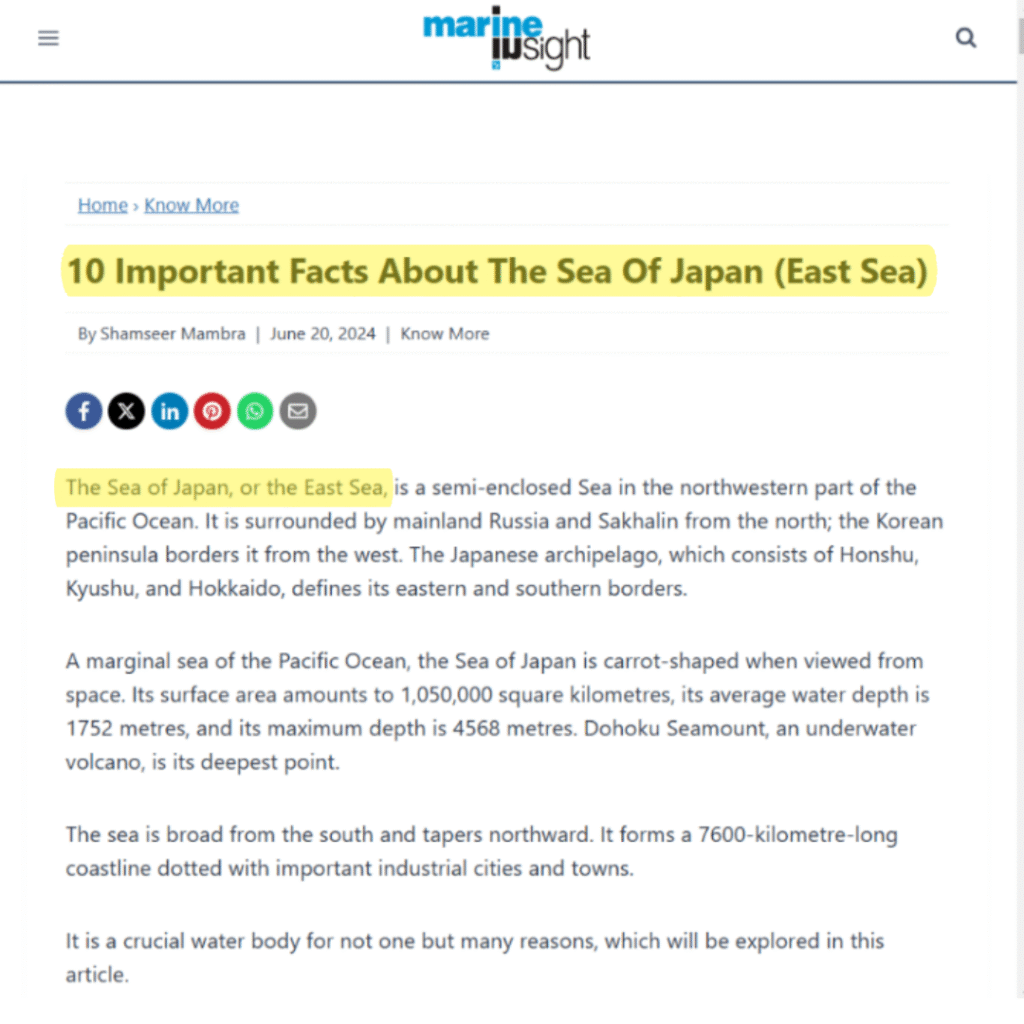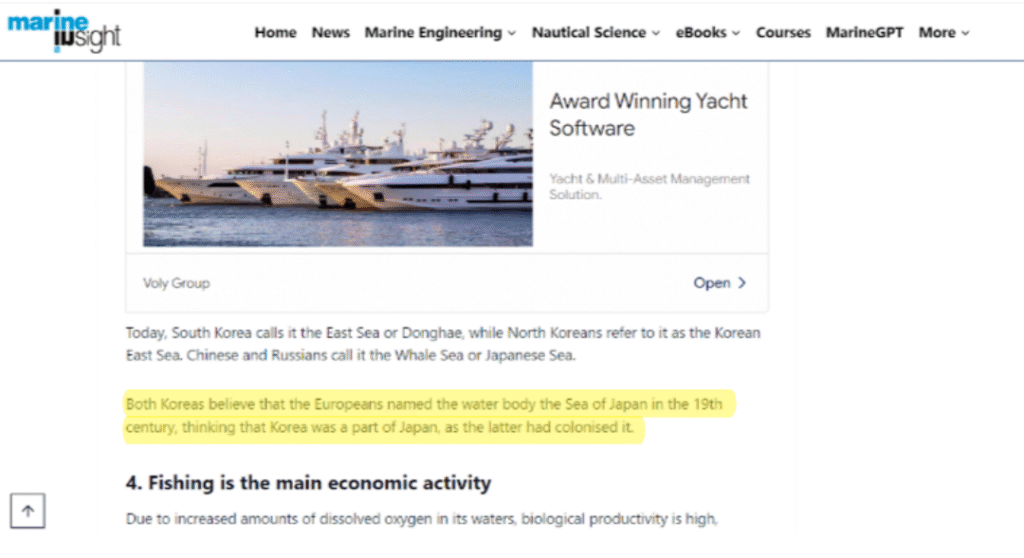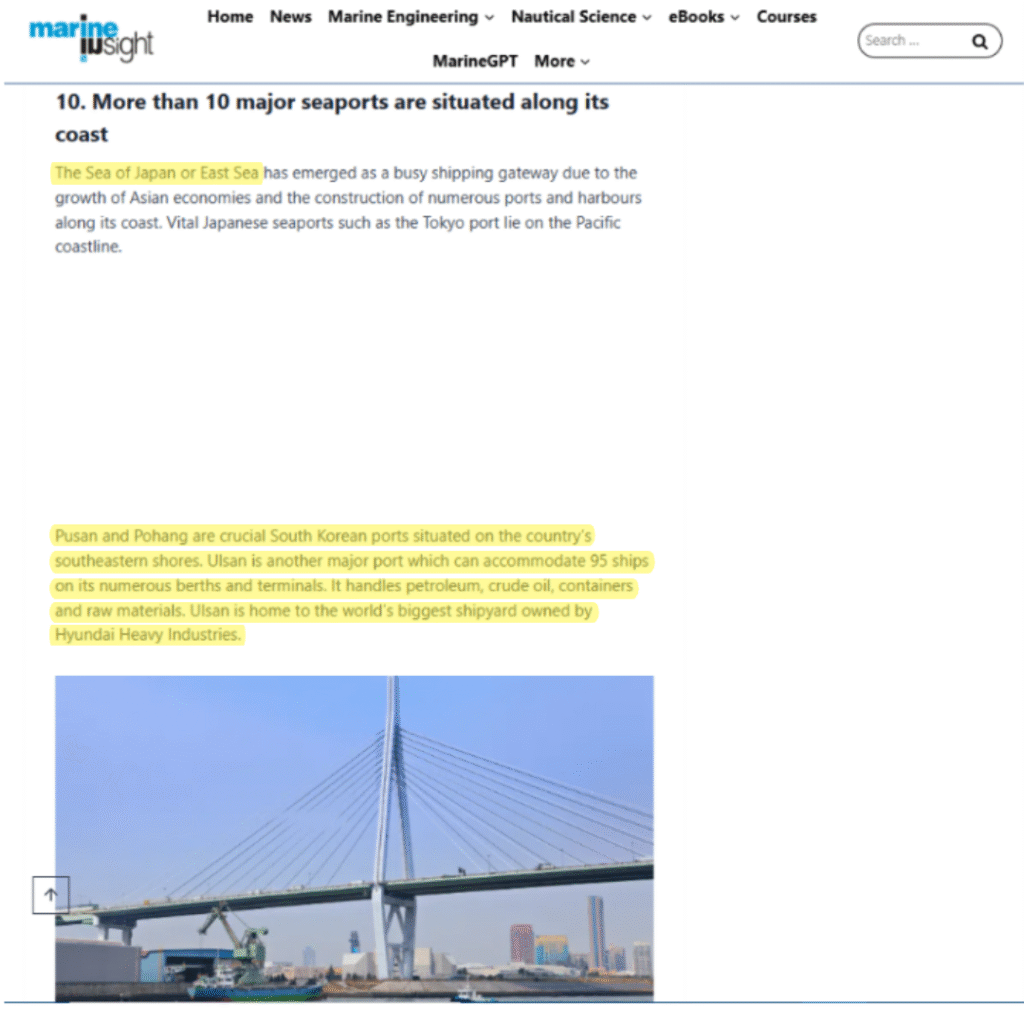<2024.11>

The Voluntary Agency Network of Korea (VANK) has achieved a significant milestone by successfully correcting the exclusive use of “Sea of Japan” and the distortion of Korean history on the globally recognized maritime information website Marine Insight.
This achievement goes beyond simply fixing a web error—it is being recognized as a meaningful example of how efforts to promote accurate information about Korea in the digital age can gain recognition and impact on the international stage.
Marine Insight is a widely respected platform that provides essential information to maritime professionals and students worldwide.
It features over 5,000 specialized articles, has more than 1.5 million followers on social media, and 75,000 email subscribers.
With over 12 million video views, it plays a highly influential role in shaping opinions within the global maritime industry.
Because of its authority and reach among maritime professionals, any misinformation on Marine Insight could have led to the widespread dissemination of errors throughout the global maritime knowledge ecosystem.
In this context, VANK youth researcher Seong Hye-seung discovered that Marine Insight had not only used the sole designation “Sea of Japan”, but also included the historically distorted statement:
“Both North and South Korea believe that European explorers in the 19th century named the sea ‘Sea of Japan.’”
Upon identifying the error, she took immediate action.
Over the course of two weeks, Seong persistently sent formal protest letters to Marine Insight and posted comments on the website’s forums, urging them to correct the misinformation.
Rather than simply protesting, she also provided objective historical evidence to support the legitimacy of the name “East Sea.”
This included historical documents, old maps, and resolutions from international organizations, helping Marine Insight better understand the historical and diplomatic background behind the East Sea naming issue.

Emphasizing “East Sea” as a Historically Accurate and Internationally Justified Name
Seong Hye-seung emphasized to Marine Insight that the term “East Sea” is a historically and legally valid name grounded in truth and international norms. She presented five key arguments to support her claim.
First, she pointed out that the name “East Sea” has been used for over 2,000 years, as seen in historical texts such as the Samguk Sagi. She also stressed that the sea borders not only Korea, but also Japan and Russia, highlighting the name’s historical legitimacy and geographical universality.
Second, she cited international standards, explaining that both the International Hydrographic Organization (IHO) and the United Nations Conference on the Standardization of Geographical Names (UNCSGN) recommend using dual names when a geographical feature is shared by more than one country. This supports the legal justification for using both “East Sea” and “Sea of Japan.”
Third, she explained that the name “Sea of Japan” is a remnant of Japanese imperialism during its colonial rule over Korea, during which Korean place names were forcibly changed. She argued that using “East Sea” represents Korea’s efforts to restore its cultural and national identity.
Fourth, she emphasized that the East Sea is more than a geographic name for Koreans—it is a cultural symbol and spiritual heritage. It holds deep meaning in Korean identity, even appearing in the Korean national anthem.
Fifth, she referred to global movements in support of East Sea labeling. Major publishers such as National Geographic, Dorling Kindersley, and Lonely Planet have adopted the dual naming system. In addition, U.S. states like Virginia and New York have passed laws and issued educational guidelines encouraging the use of “East Sea” alongside “Sea of Japan.”
Thanks to Seong’s persistent efforts and well-structured arguments, Marine Insight finally responded with meaningful change. The site revised its labeling from the exclusive “Sea of Japan” to the dual term “East Sea / Sea of Japan,” and removed historically inaccurate content. It also updated its site with detailed information about major Korean ports and shipyards—such as Busan, Pohang, and Ulsan—offering greater insight into Korea’s maritime significance.
This outcome shows that VANK’s efforts led to a deeper understanding of Korea and greater awareness of the East Sea naming issue within Marine Insight. Their correction is expected to have a ripple effect across the global maritime community, promoting wider recognition of “East Sea” as a valid and just name.
